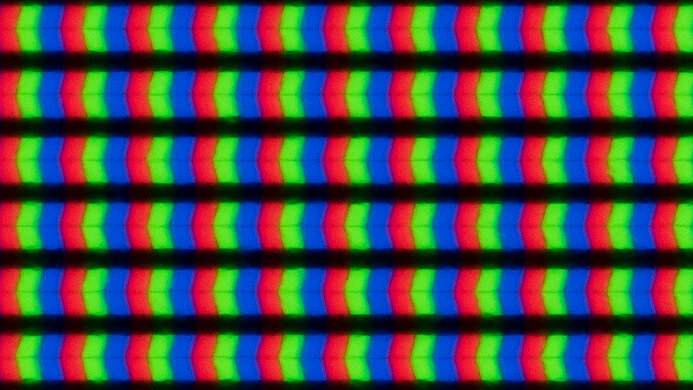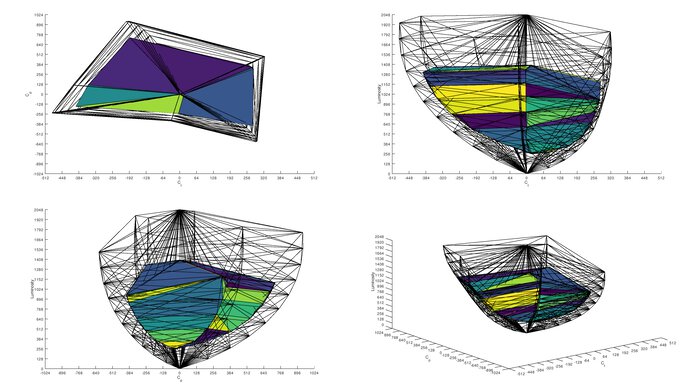Two of the most common panel types in monitors are IPS and OLED. These are technically very different, as IPS monitors are backlit with LED lights, while OLEDs don't require a backlight and instead are self-emitting. Despite being so different, they still compete with each other in the monitor market because they each present their own pros and cons. While OLEDs are better for gaming due to their deeper blacks and superior motion handling, IPS monitors are better for use in bright rooms because they get brighter. One of the bigger downsides of OLEDs is their risk of burn-in with constant exposure to the same static elements over time. IPS monitors don't have this risk, making them an alternative if you're worried about that.
When comparing IPS vs OLED monitors, it's easy to say that OLEDs are better because of their superior picture quality and better motion handling. That doesn't mean that OLEDs are better for everyone, though, as you need to think about how you're going to use your monitor. In some cases, IPS monitors are better. This article breaks down the differences between OLED and IPS panels in monitors.
If you want to learn about more panel types, you can also read about LED vs OLED monitors, OLED vs VA and IPS vs TN panels, or IPS panels and their specific tech.

Differences In Panels
OLED and IPS panels are technically very different, and don't even use the same technology to display an image. IPS, which stands for In-Plane Switching, is a type of LCD panel that relies on LED lights placed behind the panel to illuminate the screen when displaying an image. The placement of the LED lights behind the panel varies, as some monitors have lights only placed at the edges, while others have lights placed throughout the display. On the other hand, OLED (Organic Light-Emitting Diode) consists of self-emitting pixels that don't use a backlight. In other words, each pixel in an OLED panel turns on and off individually.
In reality, OLED and IPS are umbrella terms for subtypes of panels made by different manufacturers. There are different types of IPS displays that each share the same characteristics, but it's hard to distinguish them without looking at their pixels. However, there's a bigger difference in OLED panel types, as there's LG Display's WOLED panel and Samsung Display's QD-OLED panel, each of which has their own characteristics.
Below you can see examples of the different IPS and OLED panels available. The pixels on the IPS panels have different shapes, but they have the same red, green, and blue (RGB) subpixel layout. The differences are bigger between WOLED and QD-OLED panels themselves, as they don't even share the same subpixel layout. WOLEDs use a white subpixel, along with red, green, and blue subpixels, while QD-OLEDs have the RGB subpixels in a triangular layout. So, while we can still compare OLED vs IPS monitors as a whole, it's still important to remember that the type of OLED panel has an impact on some performance aspects.
What's Better? OLED vs IPS
| Contrast | Brightness | Viewing Angles | Motion | Colors | Text Clarity | Burn-In |
|---|---|---|---|---|---|---|
| OLED | IPS | OLED | OLED | OLED | IPS | IPS |
For the most part, OLED monitors are better overall because they have improved picture quality with deeper blacks, more vivid colors, and superior motion. However, that doesn't mean they're better than IPS monitors for everything, as IPS monitors still get brighter and don't risk burn-in with constant exposure to the same static elements over time. This means that deciding which one is better really depends on what you're planning to use the monitor for.
Contrast
Winner: OLED
The biggest advantage when it comes to OLEDs is their superior black levels in dark rooms. This is because their pixels are self-emitting, so they display pure black when they're off, resulting in a near-infinite contrast ratio and no haloing around bright objects. This applies to WOLED and QD-OLEDs, but keep in mind that these perfect black levels are only in dark rooms. The black levels rise in bright rooms, with blacks on QD-OLEDs looking purple in a well-lit environment.
IPS monitors have much worse contrast, as blacks look gray against bright highlights no matter the environment it's in. Though, IPS monitors that have Mini LED backlighting with effective local dimming features can improve their black levels and contrast. However, these are still behind OLEDs for this, and they normally have haloing around bright objects.
You can see these differences between an OLED, a normal IPS monitor, and an IPS monitor with Mini LED backlighting below. It's clear that the Mini LED display has deeper blacks than the normal IPS, but it's still far off from the OLED.
| OLED | IPS | Mini LED IPS |
|---|---|---|
| Dell Alienware AW2725DF | LG 27GR93U-B | BenQ MOBIUZ EX321UX |
 |
 |
 |
 |
 |
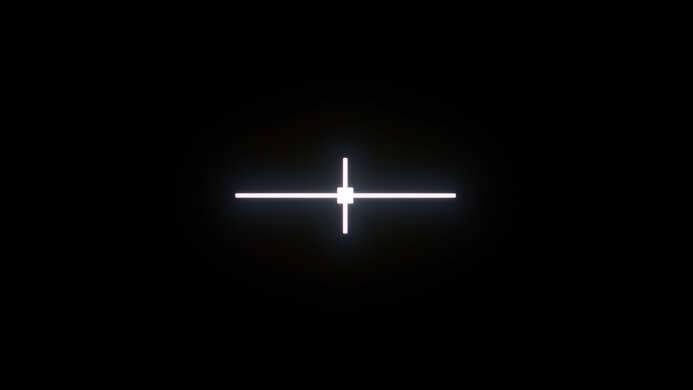 |
Brightness
Winner: IPS
While OLEDs are better for use in dark rooms, IPS monitors are better for use in bright rooms. This is because they get brighter, so they do a better job at fighting glare. Using data from 97 monitors that we've tested on Test Benches 2.0.1 and 2.1, you can see the average and spread from various SDR and HDR brightness test results with both IPS and OLED monitors. You can see that, on average, IPS monitors do get brighter, but the one area in which OLEDs have the advantage is with small highlights in HDR, as they pop more. There's also a bigger spread amongst IPS monitors, with the brightest using Mini LED backlighting. That said, there are some IPS monitors that are dim, so you still have to consider each model's brightness before making a buying decision.


IPS monitors also have less variation in brightness between different scenes or content than OLEDs. This is something to think about if you often minimize and maximize windows, as you may notice a change in brightness on an OLED. There are OLED monitors with settings to minimize this variance, but generally speaking, the brightness is more consistent on an IPS monitor.
Viewing Angles
Winner: OLED
Although IPS displays have wide viewing angles, OLEDs are still better for this. This means the image remains more consistent as you view it from the sides on an OLED than on an IPS display. If you're looking for an option for co-op gaming with a friend sitting next to you, OLEDs are the best choices, but IPS monitors are still good for sharing your screen with others.
You can see examples of this comparing an OLED (LG 27GS95QE-B) to an IPS (Dell G2725D) below. This IPS monitor is fine if you're viewing it from off-center, but the image gets darker at wide angles. Although not perfect, the OLED keeps the image the same even if you're viewing it from the sides.
| OLED | IPS |
|---|---|
Motion
Winner: OLED
Motion handling is another area in which OLEDs are the clear winner. As their pixels turn on and off individually, they also have a near-instantaneous response time. This means they transition to their target colors within less than a millisecond, whereas even the best IPS monitors take a few milliseconds to make a full-color transition. The longer it takes for this transition to happen, the more blur there is behind fast-moving objects. This is why motion looks so much better on an OLED, as you can see when comparing two 240Hz monitors below.
| OLED | IPS |
|---|---|
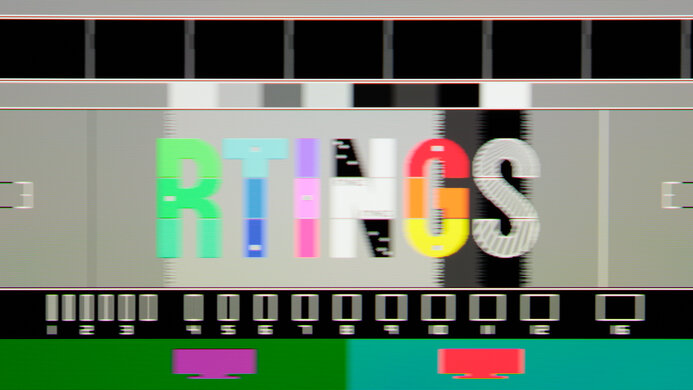 |
 |
There are some drawbacks to this, though. As OLEDs have a near-instantaneous response time, they also have to hold the frame longer with low-frame-rate content. This leads to stutter with content like movies or shows, but it isn't so much of an issue with gaming if your PC can maintain high frame rates. OLEDs, like any display, also have persistence blur at low refresh rates, so you need to use them at high refresh rates to get the best motion.
VRR Flicker
While OLEDs have better motion handling, their biggest downside when it comes to gaming is their distracting VRR flicker. This happens when you have VRR enabled on the monitor and there's a big change in the frame rate, and it's most noticeable in dark scenes. It's a problem with any OLED, and although some IPS monitors have it, it's rare. The best way to avoid this issue is if your PC can maintain stable frames, but if it can't, you may want to consider an IPS monitor for gaming if the flicker bothers you.
Below you can see examples of VRR flicker on an OLED versus an IPS monitor using the same test scene.
| OLED | IPS |
|---|---|
| LG 27GX790A-B | LG 27GR95UM-B |
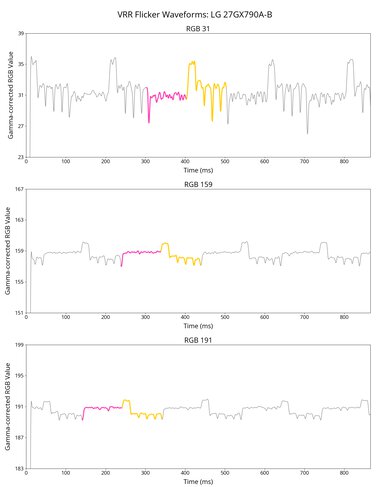 |
 |
Colors
Winner: OLED
OLEDs display a wider range of colors than IPS monitors, but it's more complex than just that because this is where there's a difference between WOLEDs and QD-OLEDs. When comparing the SDR color gamut data from 97 IPS and OLED monitors, as you can see below, there's very little difference between IPS, QD-OLED, and WOLED displays. This is especially true for the sRGB color space used in most web content, which any modern monitor has little trouble fully displaying. QD-OLEDs display more colors, on average, in the Adobe RGB color space, but the spread for IPS displays is wide.
OLEDs have an advantage with HDR colors, as you can see below, but once again, the spread for IPS monitors is wide. That said, it's hard to make any conclusions when looking at the color gamuts only, which represent the range of colors a monitor displays at a certain brightness level.
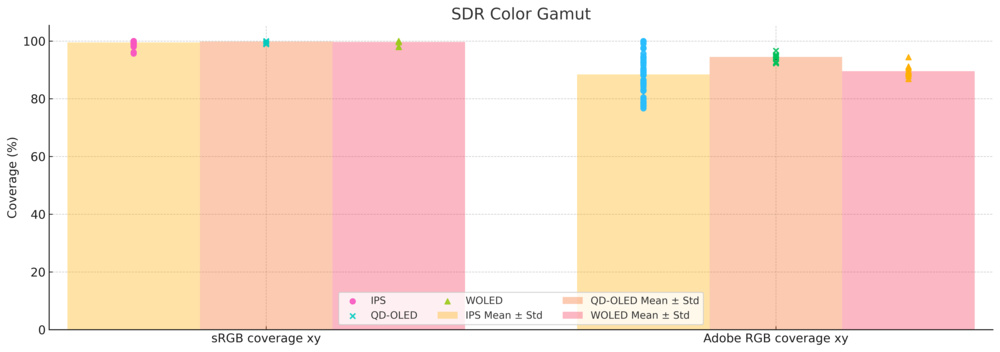
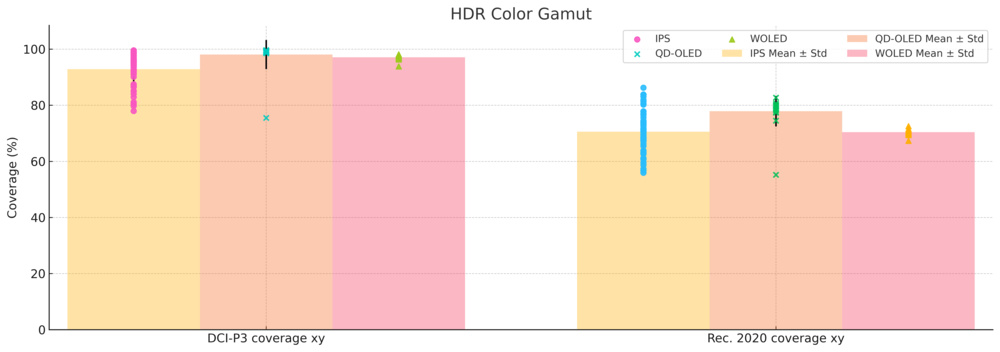
Though, where there's a bigger difference is with the color volume, which is the range of colors a monitor displays at any brightness level. This is where QD-OLEDs really pull ahead of most IPS and WOLED displays. Although WOLEDs are still better for the most part than IPS monitors, there are Mini LED IPS displays that are even close to QD-OLEDs for color volume.
The biggest advantage of QD-OLEDs when it comes to colors is that they display bright and dark colors very well. Although WOLEDs also display dark colors well, due to their near-infinite contrast ratio, they lack the same vividness as a QD-OLED. Conversely, some IPS monitors display colors nearly as bright as a QD-OLED, but they struggle with dark colors.
You can compare the color volume coverage of IPS (LG 27GR93U-B), QD-OLED (Dell Alienware AW2725DF), and WOLED (Sony INZONE M10S) monitors below. You can also see a graph comparing the average color volume and spread of the three panel types with the monitors we've bought and tested.
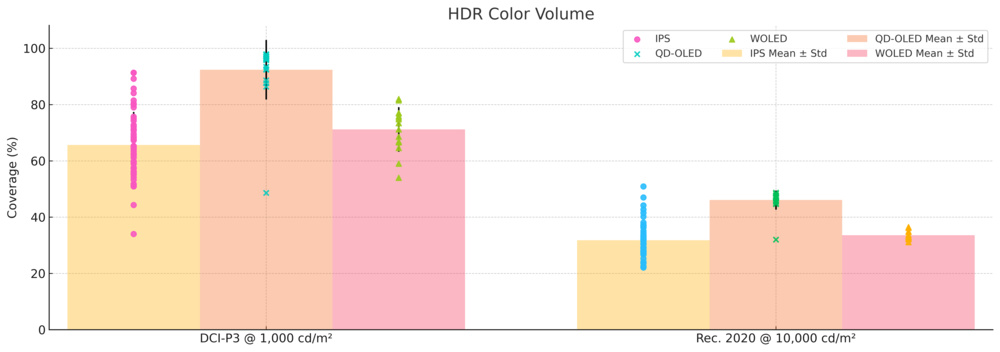
Text Clarity
Winner: IPS
IPS monitors take a point back when it comes to text clarity. This is because computer programs render text better with the traditional RGB subpixel layout on most IPS monitors, and they have some issues with non-traditional layouts on WOLEDs and QD-OLEDs. The biggest downside of reading text with OLEDs is that they have color fringing around text, which is more noticeable on QD-OLEDs than WOLEDs. That said, the level at which this fringing bothers you depends on your tolerance, and some people may not find this distracting at all.
The differences in text clarity between IPS vs OLED displays is also harder to tell with monitors that have higher pixel density. You can see this below when comparing the panel types of monitors that have a pixel density of 140 PPI versus those with 109 PPI. The 1440p IPS monitor clearly has better text clarity than either of the OLED panel types, but the difference isn't as big with the 4k monitors. Keep in mind that other factors impact text clarity, like the screen coating, but generally speaking, IPS monitors have sharper text than OLEDs with the same pixel density.
| Panel Type | 27-inch, 1440p 109 PPI |
32-inch, 4k 140 PPI |
|---|---|---|
| IPS |  |
 |
| WOLED |  |
 |
| QD-OLED |  |
 |
Burn-In
Winner: IPS
Lastly, the biggest downside of OLEDs is the risk of burn-in. This can happen with constant exposure to the same static elements over time, especially if you have the screen at the max brightness without varying content. This is a big concern if you need a monitor only for work, as static elements like toolbars can increase the risk of burn-in. It isn't so much of an issue if you change up what you do with your monitor, like by gaming or watching videos every so often. If that concerns you, it's better to go for an IPS display, as they don't risk burn-in.
Learn about our accelerated burn-in test with TVs.
Which Panel to Get for Your Usage
| Gaming | Productivity | Content Creation | Multimedia |
|---|---|---|---|
| OLED | IPS | IPS or OLED | OLED |
Knowing these differences between OLED vs IPS monitors, it's easy to think that OLEDs are objectively better. While most of the data does support this, it doesn't mean that OLED monitors are the better choice for everyone, and they're far from perfect. OLEDs have their own issues that aren't discussed in this article, like black crush in dark scenes and gamma shifting with low refresh rates. Although these seem like minor problems, you may want to consider them before buying an OLED.
Choosing between an OLED and an IPS monitor really depends on your usage. Essentially, get an OLED if you're a gamer and you want the best motion handling. You should also get an OLED if you care about picture quality, either for watching content or gaming.
That said, you should go for an IPS if you need something for work, as you won't have to worry about burn-in with constant exposure to static elements, and they have sharper text, too. Knowing that IPS monitors are brighter also helps if you work in a sunny environment. You can also find IPS monitors for much less, which is something to consider if you're on a tight budget.
The decision may be harder to make when it comes to choosing a panel type for content creation. OLEDs have the advantage for picture quality, but once again, they risk burn-in if you have your editing program open all day. You may prefer an OLED if you're a casual content creator and you use the monitor for other things, but you should stick with an IPS if you're a professional editor who uses your screen for many hours.
For more options, you can also check out all our monitor recommendations.
Conclusion
The battle between IPS vs OLED monitors may seem like an easy win for OLED, with the way that most of the best monitors available use OLED panels. However, each panel type has its pros and cons, and choosing one over the other really comes down to how you're going to use the monitor. OLEDs are the best choices for gaming and watching content, especially in a dark room, as they have better picture quality. However, IPS monitors are the better choice for use in a bright room, or if you need something for work with constant exposure to the same static elements over time, as they don't risk burn-in like an OLED. Ultimately, the better panel type out of the two is whichever suits your needs more.
